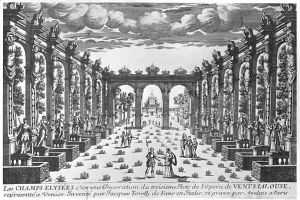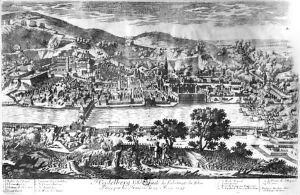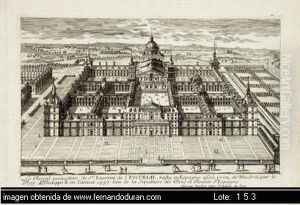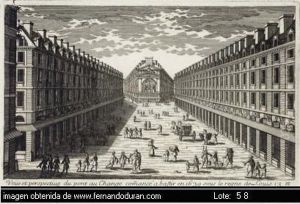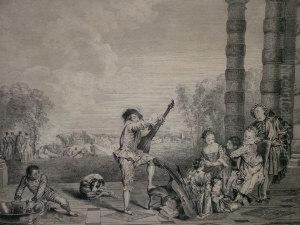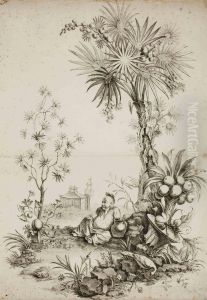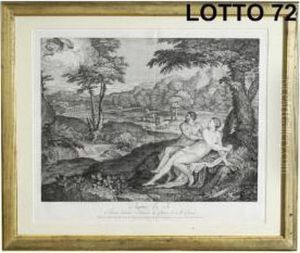Pierre Aveline Paintings
Pierre Aveline, born in Paris in 1654, was a distinguished French engraver, illustrator, and printmaker, known for his masterful representations of cityscapes and architectural views. He hailed from a family deeply entrenched in the arts; his father, Pierre Aveline l'Aîné, was also an engraver, which suggests that Pierre's initial exposure and training in the art form came from within his own household. His works are a significant component of the visual documentation of urban and architectural developments in Europe during the late 17th and early 18th centuries.
Aveline was notably skilled in the technique of engraving, which involves incising a design onto a hard, usually flat surface, by cutting grooves into it. This skill was particularly well suited to the detailed and precise depiction of architectural features and urban landscapes that became his specialty. His engravings not only served as works of art but also as valuable records of architectural and urban scenes of his time, offering insights into the historical and aesthetic contexts of the period.
Throughout his career, Aveline gained recognition and patronage for his detailed and accurate engravings. He was appointed as the engraver to the King of France, a prestigious position that acknowledged his mastery and contribution to the art of engraving. His works were widely disseminated, not only in France but across Europe, contributing to his reputation as one of the leading engravers of his time.
Pierre Aveline's legacy is preserved through his extensive body of work, which continues to be studied and admired for its artistic quality and historical significance. His engravings provide a valuable window into the urban and architectural landscape of Europe in the late 17th and early 18th centuries, capturing the grandeur and detail of its cities and buildings with precision and beauty. Aveline passed away in Paris in 1722, leaving behind a rich legacy that continues to influence the fields of art, history, and engraving.
